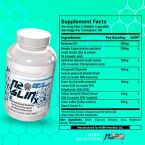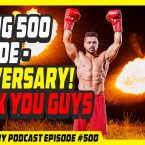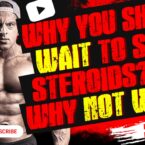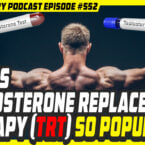Sign up to Get FREE Steroids, SARMS, Peptides eBooks
[sc:masthead-std]
[sc:salutation-std]
Those looking for testosterone production that’s blasting through the roof should check out hormone replacement therapy. This procedure will not only get your muscle gains back on track, but also increase your sex drive.
When a person is in their early 20’s, they don’t seriously think about losing their sex drive, having fat deposits that never go away, and working three times as hard to get the same muscle gains. But 20 years later, these things are all you’ll be thinking about as you drift into middle-agedom. And if you’re already there, then you may be wondering if there’s a way to overcome your current shortcomings.
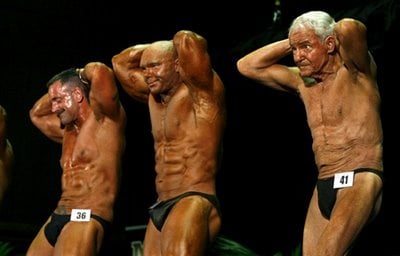
Well seeing as how most of these problems arise from a lack of testosterone, some people use hormone replacement therapy - a.k.a. testosterone replacement therapy - to regain lost youth. After all, this procedure has proven very effective in restoring people’s libido, and helping them pack on major muscle once again. If you’re interested in the specifics of hormone replacement therapy, here is a look at what HTR is, why it’s normally done, and how it improves bodybuilding performance.
What is Hormone Replacement Therapy?
While hormone replacement therapy also involves replacing estrogen in females, the testosterone replacement version of HTR is much more common in bodybuilding. As the name implies, this process simply involves putting more testosterone into the body. The different ways that doctors use to perform HTR include intramuscular injections, testosterone gels and testosterone patches.
Why is Hormone Replacement Therapy Done?
As you may have gathered, people undergo hormone replacement therapy because their body is lacking testosterone (or estrogen for females). There are multiple causes for why people end up needing HTR, including an injury to the testicles, stress, drug or alcohol addiction, pituitary gland problems and naturally decreased testosterone production. The latter is usually the case since men past the age of 30 start to see a 2% decrease in testosterone production every following year.
When HTR becomes Critical
Some of the obvious signs that you’re in need of testosterone therapy include when you feel more depressed than an emo teenager, have lowered libido, have an increase in stubborn fat (especially in your pecs and around the abdomen), and suffer from the dreaded ED. If your muscle gains are hard to come by, and you stay limp in the face of a perfect 10, you should visit a doctor so they can measure the amount of testosterone in your blood. Assuming you do indeed have low testosterone, the doctor will get you on one of the aforementioned HTR plans. Also keep in mind that many doctors won’t even consider you a candidate for this process unless you’re over the age of 30.
People who shouldn’t undergo HTR
Unfortunately, not everybody is a good candidate for testosterone replacement therapy - even if they do have all of the signs of decreased testosterone. People with prostate cancer should definitely avoid HTR because it has the potential to enlarge one’s prostate and stimulate the cancer. And anybody who has breast cancer should also steer clear of testosterone replacement procedures (yes, breast cancer can happen to men too).
Testosterone Replacement Therapy and Bodybuilding
I’ll spare you the science essay on how testosterone is crucial to putting on muscle mass. This being said, bodybuilders have been using testosterone in various forms for decades to boost production of this hormone and pack on more muscle. What’s interesting though is that heavy testosterone usage during your 20’s and 30’s can lead to lower natural testosterone production as you get into your 40’s and 50’s.
This is especially the case for those who go off of testosterone as they get older and don’t take bodybuilding as seriously. Some bodybuilders who stop injecting testosterone or using gel forms never see their bodies produce the same amount of this hormone. But the truth is that you don’t even have to use testosterone to experience these problems since many natural bodybuilders also suffer from the same problem.
The reason why is because when we work out, break down our bodies, and undergo the process of rebuilding muscle tissue, we slowly age ourselves. In short, we accelerate our aging process by constantly breaking our bodies down and using more testosterone. Assuming you continue to bodybuild later on in your life, you are virtually guaranteed to need HTR to continue experiencing muscle gains.
Even if you aren’t middle-aged, you could potentially be eligible for testosterone replacement therapy assuming your production is low. So if muscle is hard to come by for you, it could be worth a trip to the doctor to see if you need HTR.
Hormone/Testosterone Replacement Therapy Side Effects
Whether you’re looking to go through testosterone replacement therapy for bodybuilding purposes and/or other reasons, you should be aware of the possible side effects with this procedure. Some of the problems that can arise include acne, breast enlargement, decreased testicle size, hair loss, decreased bone mass, an enlarged prostate, sleep apnea and fluid retention.
Fortunately, many of these potential problems aren’t enough to scare most people who need hormone replacement therapy away from the process. So no matter whether you’re middle-aged and heading down the slope of decreased testosterone, or in your early 20’s or 30’s and just looking ahead to the future, you should give HTR a thought when you start exhibiting any of the previously discussed symptoms.
Here's a few more articles on HRT on the EF forums.
Telomeres Gene & Reversing Aging
Women vs. Men with Sex on the Brain... Constantly
And here's a link to the EliteFitness.com Life Extension, Andropause & Masters Bodybuilding discussion forum.

